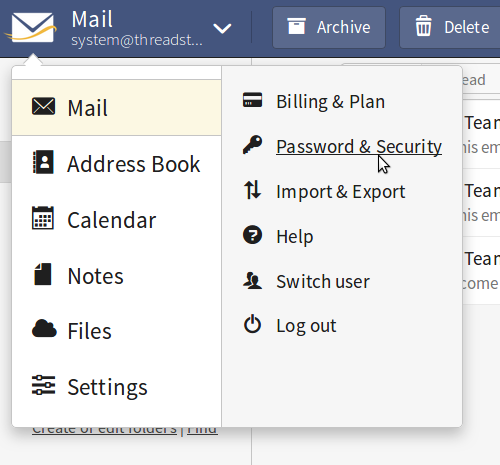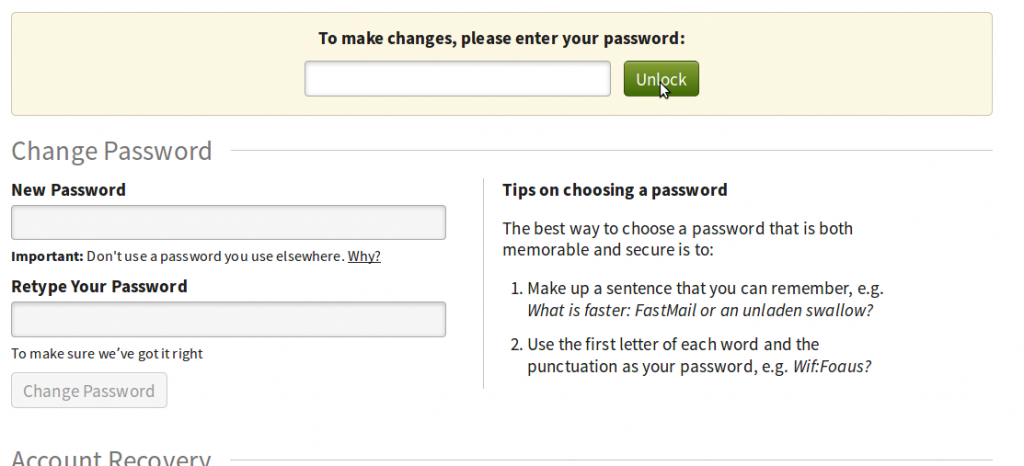
I went through a headache today when I discovered that emails were no longer being sent from Threadstr. I couldn’t figure out what had changed because I haven’t actually touched it in quite awhile. Both my local development and threadstr.com had stopped working and with the same error message: “Error: Invalid login: 535 5.7.0 Incorrect username or password.” I had changed no settings since the last time it was working on either, I had made no changes to the domain registration, and the username and password were correct.
Well, it turns out that something changed on FastMail’s side. I’m not exactly sure specifically what they did, but they no longer let you programmatically send mail using the same password that you use to log in to the frontpage. You now need to create a new password specifically for your application.
It’s actually a good idea, but I sure wish they had let me know about this before they implemented it, because it completely broke Threadstr functionality. I can’t even find an announcement for it– I had to dig through the settings in a wild madcap adventure to find something, anything that could have caused the service to suddenly stop working.
(Irritated as I am, I’m making no plans to change to another email provider, because they’ve still been great so far.)
At any rate, I thought I’d make a post in case this helps anybody else. If you can’t get FastMail to work with something like NodeMailer or PHPMailer, or if it suddenly stopped, it could be this. Below are screenshots of the FastMail settings that will solve the problem.



Use the password generated here instead of the regular password in your application, and you’re golden.
